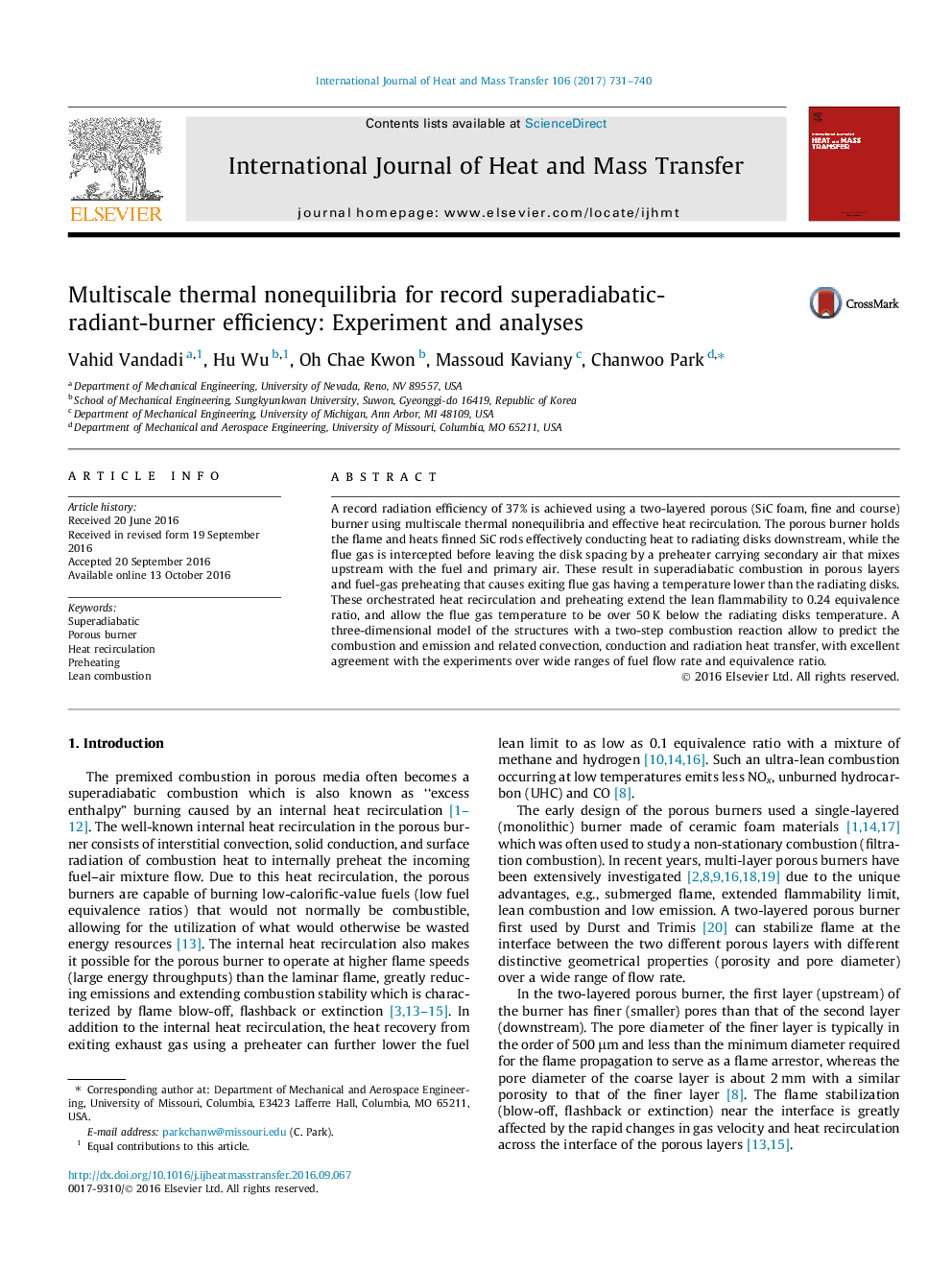| Article ID | Journal | Published Year | Pages | File Type |
|---|---|---|---|---|
| 4994801 | International Journal of Heat and Mass Transfer | 2017 | 10 Pages |
â¢A record radiation efficiency of 37% is achieved using a two-layered porous burner.â¢Multiscale thermal nonequilibria and effective heat recirculation are used.â¢The lean flammability is extended to 0.24 equivalence ratio.â¢The flue gas temperature is over 50 K below the radiating disks temperature.
A record radiation efficiency of 37% is achieved using a two-layered porous (SiC foam, fine and course) burner using multiscale thermal nonequilibria and effective heat recirculation. The porous burner holds the flame and heats finned SiC rods effectively conducting heat to radiating disks downstream, while the flue gas is intercepted before leaving the disk spacing by a preheater carrying secondary air that mixes upstream with the fuel and primary air. These result in superadiabatic combustion in porous layers and fuel-gas preheating that causes exiting flue gas having a temperature lower than the radiating disks. These orchestrated heat recirculation and preheating extend the lean flammability to 0.24 equivalence ratio, and allow the flue gas temperature to be over 50Â K below the radiating disks temperature. A three-dimensional model of the structures with a two-step combustion reaction allow to predict the combustion and emission and related convection, conduction and radiation heat transfer, with excellent agreement with the experiments over wide ranges of fuel flow rate and equivalence ratio.
